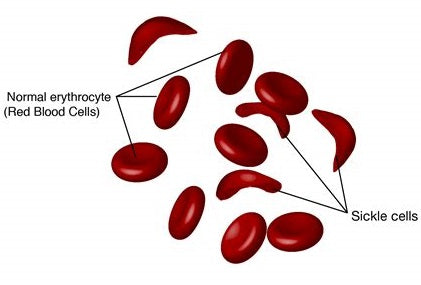
Sickle Cell Anemia Potential Cures
Sickle cell anemia (SCA) is a genetic blood disorder characterized by the production of abnormal hemoglobin, leading to distorted red blood cells that resemble a sickle or crescent shape. This condition affects millions of people worldwide, particularly those with ancestry from sub-Saharan Africa, India, Central and South America and parts of the Mediterranean and Middle East. While there is currently no widespread cure for sickle cell anemia, advances in medical science are offering new hope. This article explores the latest treatments, potential cures and the broader implications for health and regenerative medicine.
What Is Sickle Cell Anemia?
Sickle cell anemia is caused by a mutation in the hemoglobin gene, leading to the production of hemoglobin S. This altered hemoglobin causes red blood cells to become rigid and sticky, obstructing blood flow and resulting in painful episodes known as sickle cell crises. These crises can lead to severe complications, including organ damage, increased risk of infection and stroke.
Symptoms of Sickle Cell Anemia
- Pain Crises: Sudden episodes of severe pain, often in the chest, abdomen and joints.
- Anemia: Chronic fatigue and weakness due to a shortage of red blood cells.
- Swelling: Painful swelling in the hands and feet, known as dactylitis.
- Frequent Infections: Increased susceptibility to infections due to spleen damage.
- Delayed Growth: Children may experience delayed growth and puberty.
Current Treatment Options
While there is no definitive cure for sickle cell anemia, various treatments can help manage symptoms and reduce complications.
1. Pain Management
Pain relief is a primary focus for individuals experiencing sickle cell crises. Treatments may include:
- Over-the-Counter Pain Relievers: Medications like ibuprofen or acetaminophen.
- Prescription Medications: Opioids may be prescribed for severe pain.
2. Blood Transfusions
Regular blood transfusions can help manage anemia and reduce the risk of stroke by increasing the number of healthy red blood cells. However, this treatment requires careful monitoring to avoid complications such as iron overload.
3. Hydroxyurea
This chemotherapy drug is used to reduce the frequency of pain crises and the need for blood transfusions. Hydroxyurea works by increasing the production of fetal hemoglobin, which can prevent sickling of red blood cells.
4. Antibiotics and Vaccinations
To reduce the risk of infections, children with sickle cell anemia are often prescribed antibiotics and are recommended to receive vaccinations against diseases like pneumonia and meningitis.
Advances Toward a Cure
Stem Cell and Bone Marrow Transplants
Currently, the only approved cure for sickle cell anemia involves stem cell or bone marrow transplants. This procedure is typically reserved for young patients with severe disease and requires a matched donor, often a sibling. The success rates for transplants can be high, especially in children, but the procedure carries significant risks, including:
- Graft-Versus-Host Disease (GVHD): A serious condition where donor cells attack the recipient's organs.
- Infection Risks: Due to the immunosuppressive therapies required before the transplant.
Gene Therapy
Recent advancements in gene therapy offer promising avenues for curing sickle cell anemia. Researchers are exploring methods to:
- Modify Hematopoietic Stem Cells: By correcting the defective gene responsible for sickle cell disease, or by introducing a healthy copy of the gene, scientists hope to create a sustainable supply of normal red blood cells.
- CRISPR Technology: Gene editing techniques, such as CRISPR, are being tested to directly edit genes in patients’ stem cells, potentially providing a one-time cure.
Clinical Trials
Numerous clinical trials are currently underway to evaluate the effectiveness of gene therapies and other innovative treatments. Keeping abreast of these developments can provide insights into future options for patients and families affected by sickle cell anemia.
The Broader Implications for Health and Regenerative Medicine
The advancements in treating sickle cell anemia are part of a larger trend in regenerative medicine, where the focus is on repairing or replacing damaged tissues and organs. The lessons learned from sickle cell research can have implications for other genetic disorders and diseases, opening doors to new treatment paradigms.
1. Regenerative Potential: Stem cell therapies developed for sickle cell anemia may eventually be adapted for other conditions.
2. Personalized Medicine: As gene therapy techniques advance, tailored treatments based on individual genetic profiles may become the norm.
3. Public Health Impact: Successful treatments and potential cures can significantly improve the quality of life for patients and reduce healthcare costs associated with chronic illnesses.
Conclusion
While sickle cell anemia remains a significant health challenge, ongoing research and advancements in treatment options provide hope for patients and their families. Stem cell transplants and gene therapy represent the forefront of potential cures and as these technologies evolve, they may transform the landscape of treatment for not only sickle cell anemia but also other genetic disorders.
By understanding the current landscape of treatments and the future potential for cures, we can foster hope and drive the conversation around sickle cell anemia towards a brighter future.
Sources:
1. CDC - Sickle Cell Disease Data & Statistics Link
2. NHLBI - Sickle Cell Disease Treatment Link
3. ClinicalTrials.gov - Sickle Cell Anemia Studies Link